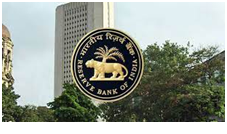RBI’s planned ‘lightweight’ payments system for emergencies
Context: The Reserve Bank of India (RBI) has conceptualised a lightweight payment and settlements system, which it is calling a “bunker” equivalent of digital payments, which can be operated from anywhere by a bare minimum staff in exigencies such as natural calamities or war.
- The infrastructure for this system will be independent of the technologies that underlie the existing systems of payments such as UPI, NEFT, and RTGS.
- The central bank has not offered a timeline for the launch of this payments system yet.
Why is such a lightweight payments system needed?
- In its Annual Report for 2022-23 published RBI says that the lightweight and portable payment system is expected to operate on minimalistic hardware and software, and would be made active only on a “need basis”.
- Such a lightweight and portable payment system could ensure near zero downtime of the payment and settlement system in the country and keep the liquidity pipeline of the economy alive and intact by facilitating uninterrupted functioning of essential payment services like bulk payments, interbank payments and provision of cash to participant institutions.
- The system is expected to process transactions that are critical to ensure the stability of the economy, including government and market related transactions.
- Having such a resilient system is also likely to act as a bunker equivalent in payment systems and thereby enhance public confidence in digital payments and financial market infrastructure even during extreme conditions.
How will the lightweight system be different from UPI?
- The RBI has said that there are multiple payment systems available in the country for use by individuals as well as institutions, each of which has its distinct character and application.
- According to the RBI, existing conventional payments systems such as RTGS, NEFT, and UPI are designed to handle large volumes of transactions while ensuring sustained availability. As a result, they are dependent on complex wired networks backed by advanced IT infrastructure.
- However, catastrophic events like natural calamities and war have the potential to render these payment systems temporarily unavailable by disrupting the underlying information and communication infrastructure.
| Practice Question
1. What is ‘lightweight’ payment system ? Why is it needed? |




